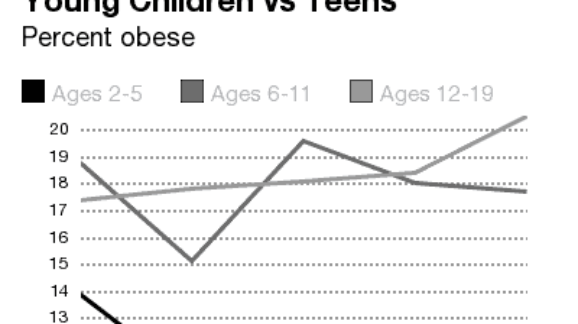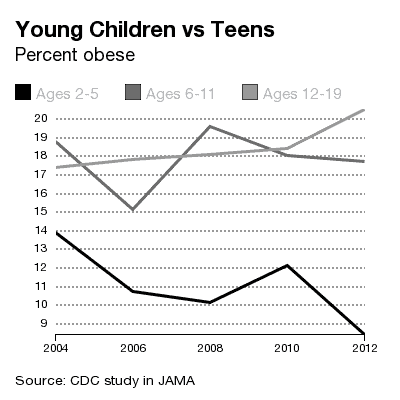Time to Throw out Michelle Obama’s Lunch Program?

As I wrote in The Hill today, Congress this month will decide whether or not to continue funding Michelle Obama’s favorite Healthy, Hunger-Free Kids Act. The goal of the program was to address childhood obesity by getting schools to adhere to government nutritional standards in exchange for federal funds. Five years after implementation, we must ask if the program has achieved its laudable goals or if it is time to put those fifteen billion dollars to better use.
HHFKA, enacted in 2010, requires schools to offer more fruits and vegetables, less sugar, less sodium, and more whole grains in order to receive federal funding supporting free breakfasts and lunches at school. According to a report released last month by the Centers for Disease Control, the number of schools in the nation complying with federal nutrition standards has significantly increased. Since 2000, schools offering two or more vegetables and two or more fruit options with lunch has increased by about 18 and 10 percent, respectively. About 40 and 50 percent of schools switched to low-sodium canned vegetables (instead of regular canned vegetables) and used other seasonings instead of salt since 2000. This sounds like great progress, but it doesn’t tell us if kids are actually eating healthier as a result.
Obesity among children between two and five years old has declined 3.7 percent from 2010 to 2012. However, for kids between 12 and 19 years old, the obesity rate increased by 2.1 percent. Overall, childhood obesity has remained fairly stable between 2008 and 2012. What does this mean? It means obesity is an immensely complicated and long-term disease that takes years and potentially hundreds of genetic and environmental factors to manifest.
What these numbers do show us is that the declines and increases occurring now are just part of a trend that has been developing over more than 10 years. Childhood obesity rates for almost all age groups declined between 2008 and 2012 (if temporarily). Only 12-19 year olds saw consistently increasing obesity rates since 1980. But even that group had something of a plateau between 2002 and 2010, seeing only slight increases of 0.3 percent to 0.7 percent. Yet, as I noted, between 2010 and 2012 that rate jumped by 2.1 percent.
And just because cafeterias are offering healthier options, it doesn’t mean kids are actually eating them. Researchers from the University of Vermont captured images of students’ lunch trays after leaving the lunch line and selecting their meals and again as they disposed of what was left on their tray. They found that after the implementation of HHFKA there were more fruits and vegetables on children’s’ food trays, as required by the law. But they also found that food waste—the amount of food students threw away—increased by 56 percent.
Thanks in part to the new standards, participation in the program has declined by about 1.3 million students since the implementation of HHFKA. Disturbingly, evidence points to the fact that it is paying students who are opting out of school lunches. Schools may have thought that taking the federal subsidies would help save money, but it might actually end up costing them money, which is why some are opting out. According to a report from the Government Accountability Office in 2014, 321 districts left the National School Lunch Program between 2012 and 2013 (although only 27 directly cited the new lunch requirements as the reason).
On the other hand, some districts are taking advantage of the program. A provision in the law allows entire school districts—instead of single families—to apply for free meals. As a result, some kids who might otherwise pay for their lunch or breakfast have access to federally funded meals, while some needier kids go without. For example, all of Chicago’s 500-plus public schools offer free breakfast and lunches to students, regardless of their need.
Are school lunches healthier as a result of Michelle Obama’s program? Probably, but it’s questionable if that has actually improved students’ health. The HHFKA is a blunt tool that applies a one-size-fits-all solution to a complex issue. The federal government is bad at effectively managing money and worse at providing sound nutritional advice. Simply putting apples on students’ lunch trays doesn’t teach them better eating habits.
But a different approach might actually help students eat healthier in a more cost-efficient and effective way. Put more power back into the hands of individual schools, relax the nutritional standards making the targets monthly instead of daily or weekly, and let schools decide how best to adhere to nutritional standards. By all means, let’s encourage students to eat more fruits and vegetables, but let’s do so in a way that actually makes students healthier instead of just tossing billions of dollars into the garbage bin along with all of that un-eaten food.
